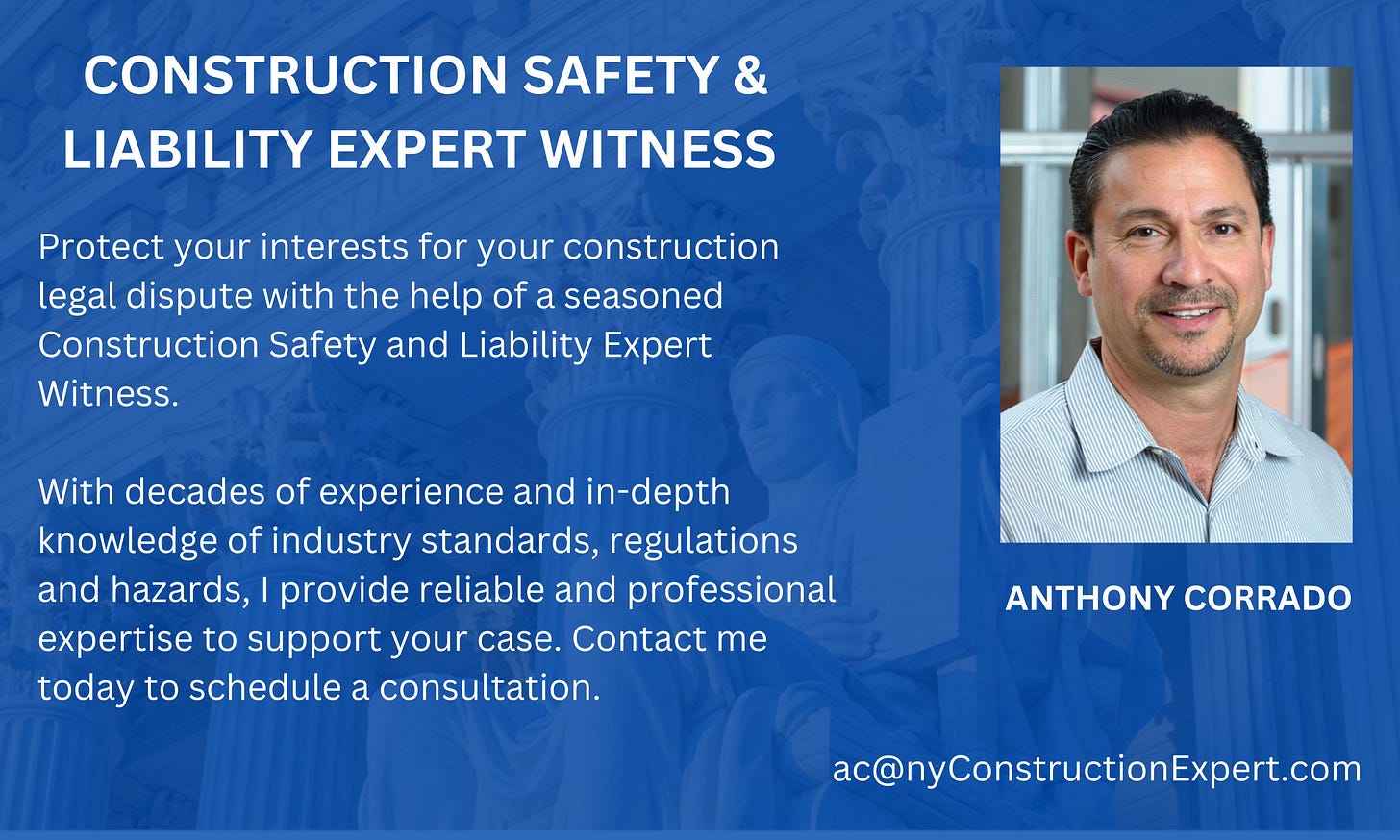The Race Against Time: How Fall Rescue Plans Can Save Lives in NYC Construction
The Dangers of Suspension Trauma and How to Prevent it on Construction Sites
The Dangers of Suspension Trauma and How to Prevent it on Construction Sites
As a construction worker in NYC, you are constantly working at heights, on scaffolding, ladders, and other leading-edge work. The city's skyline is a constant reminder of the risks you face every day. But did you know that falls are the leading cause of death in the construction industry, according to the Occupational Safety and Health Administration (OSHA)? It is crucial for construction companies to have a fall rescue plan in place to ensure the safety of their workers. But, what is a fall rescue plan and why is it so important?
A fall rescue plan is a set of procedures that outlines how to rescue a worker who has fallen and is suspended by a safety harness or other fall arrest equipment. It includes detailed instructions on how to quickly and safely get the fallen worker out of the harness and on the ground. This may involve using a rope or ladder system or calling for professional rescue services. The goal of a fall rescue plan is to prevent further injury to the fallen worker and to ensure the safety of the workers performing the rescue.
One of the biggest dangers in a fall rescue situation is suspension trauma, also known as harness hang syndrome. This occurs when a worker is suspended in a harness for an extended period of time, causing blood to pool in the legs and cutting off circulation. This can lead to unconsciousness and even death if not addressed quickly. To prevent suspension trauma, it is essential for a fall rescue plan to include procedures for quickly and safely getting the fallen worker out of the harness and on the ground.
It is important for construction companies in NYC to be familiar with OSHA regulations on fall protection. Employers are required to provide fall protection for workers engaged in leading-edge work and to have a rescue plan in place. However, having a fall rescue plan should not be only a requirement but a standard for all leading-edge work in NYC construction projects. It's a matter of life and death. Additionally, the NYC Building Code, Chapter 33, includes specific fall protection requirements such as guardrails, safety nets, and personal fall arrest systems. OSHA has a number of resources available to help employers and workers understand and comply with these regulations, including OSHA's Fall Protection in Construction standard (29 CFR 1926.501).
The Importance of Fall Protection and Rescue Planning in Hi-Rise Construction
As an NYC construction worker, your daily tasks put you at a heightened risk of falling from scaffolding, ladders, and other leading-edge work. It is crucial for employers to understand the importance of implementing a fall rescue plan, which can mean the difference between life and death in emergency situations. A well-defined and practiced rescue plan, in addition to providing fall protection, not only meets the requirements set by OSHA regulations and the NYC Building Code, Chapter 33, but also promotes the safety of all workers on the job site.
The NYC Building Code, Chapter 33, has strict regulations that require employers to provide fall protection for workers engaged in leading-edge work, and to have a rescue plan in place. This includes measures such as guardrails, safety nets, and personal fall arrest systems. By adhering to these regulations, construction companies can greatly reduce the risk of falls and ensure the safety of their workers.
Proper training is also crucial in fall protection and rescue procedures. Workers should be familiar with the fall protection equipment they are using and know how to properly inspect and maintain it. They should also be familiar with the rescue plan for their worksite and know how to safely and quickly rescue a fallen worker.
In order to make our job sites safer, it is important for employers and workers to understand and comply with OSHA regulations and the NYC Building Code, Chapter 33. By having a fall rescue plan in place, providing fall protection, and properly training workers, we can greatly reduce the risk of falls and save lives. Together, we can work towards a common goal of ensuring that everyone goes home safely to their loved ones every day.
SERIOUS ON SAFETY
We hope you found this article informative and thought-provoking. We value your input and would love to hear your thoughts and opinions on construction safety. Please feel free to leave a comment below or reach out to us directly. Don't forget to subscribe to our newsletter, SERIOUS ON SAFETY, to stay up-to-date on the latest safety news and updates. Together, we can make construction sites safer for everyone. Thank you for reading!
Expert Testimony
If you're an attorney and in need of expert testimony services for construction safety litigation, visit our website for more information and to schedule a consultation.
Fall Rescue Plan Resources
CLICK FOR YOUR: Sample Fall Rescue Plan
Sample Fall Rescue Checklist
https://www.osha.gov/sites/default/files/2018-12/fy10_sh-21009-10_Rescue_Plan_Checklist.pdf
Articles
https://ohsonline.com/Articles/2021/08/02/Fall-Rescue-Plan-s.aspx
https://safesitehq.com/fall-rescue-plan/
Source References:
https://www.osha.gov/laws-regs/regulations/standardnumber/1926/1926.501
https://www.osha.gov/SLTC/fallprotection/construction.html
https://www.cdc.gov/niosh/topics/falls/construction.html
https://www.safetyandhealthmagazine.com/articles/16069-suspension-trauma-prevention-and-response




